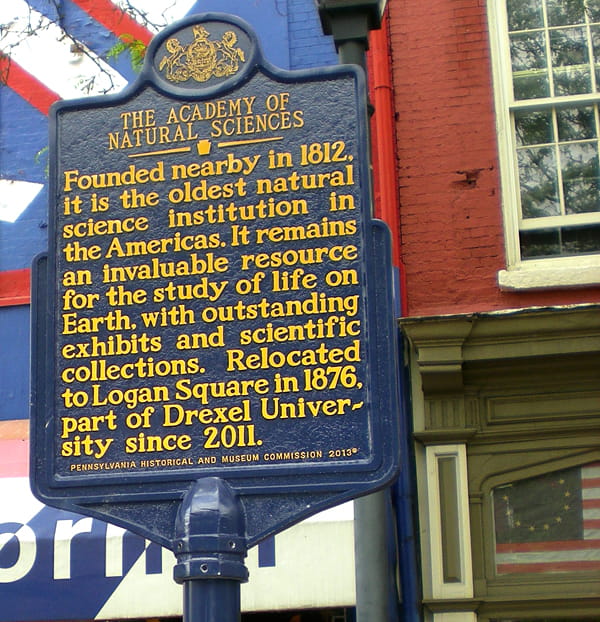New Historical Marker Marks the Spot Where the Academy of Natural Sciences Was Founded in 1812

- Mosquitoes' Bloodsucking Tubes Could Enable High-Definition 3D Printing
- Drexel Selects New, World-Class Life Sciences Building at 3201 Cuthbert Street for Medical Research Operations
- Breakthrough on Gene Therapy for Hereditary Spastic Paraplegia
- Drexel Environmental Collaboratory Releases Cross-Sector Findings on Severe Weather Recovery Challenges

At a ceremony today, state and local officials gathered in the oldest part of the city to dedicate a historical marker near the site of the founding of the Academy of Natural Sciences two centuries ago.
The building no longer exists where a group of amateur naturalists met on March 21, 1812 and signed the founding document. Back then, the site at 302 Market St. (then known as High Street) housed Mercer’s Cakes Shop. Today a blue sign with gold lettering issued by the Pennsylvania Historical and Museum Commission marks the approximate site on the south side of Market.
The marker pays tribute to the institution’s accomplishments in the scientific study of life, its outstanding exhibits and its important collection of 18 million plant and animal specimens. The dedication comes on the heels of the Academy’s yearlong bicentennial celebration and18 months after the museum, the oldest natural history museum in the nation, became an affiliate of Drexel University.
“Since its earliest days, the Academy has played a leading role in biological research in North America and around the world,” said Academy President and CEO George W. Gephart, Jr. “Today we continue to build on the legacy of our founders and to expand on their vision as we educate the science leaders of tomorrow.”
At the ceremony on the busy Old City sidewalk, Academy officials were joined by invited guests including Drexel University President John Fry and First District Councilman Mark Squilla.
The marker says: “The Academy of Natural Sciences. Founded nearby in 1812, it is the oldest natural science institution in the Americas. It remains an invaluable resource for the study of life on Earth, with outstanding exhibits and scientific collections. Relocated to Logan Square in 1876, part of Drexel University since 2011.”
Drexel News is produced by
University Marketing and Communications.